It started with one pothos on a windowsill. Then a snake plant by the entryway. A fiddle leaf fig in the corner. And just like that, your home began to feel more alive, calmer, greener, and more you, with a little help from the best planters to showcase your growing collection.
But every seasoned plant lover knows: it’s not just the plants that shape your environment, it’s what you put them in. The right planters don’t just hold soil; they shape space, enhance décor, and help your greenery thrive.
In 2025, planters are more than functional, they’re lifestyle products. With modern designs, improved materials, and a wide range of styles, they’ve become central to how we display and care for our indoor and outdoor plant collections.
Whether you're refreshing a small studio, styling a spacious patio, or simply upgrading your monstera's corner, we’ve rounded up the top planter picks of the year to help you choose the perfect fit. Let’s dig!
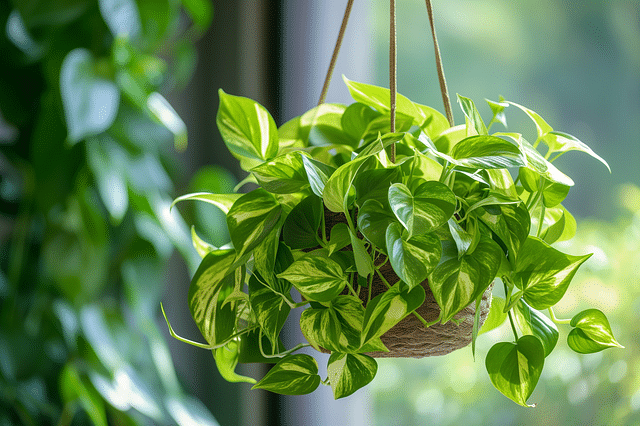
Start Smart: A Quick Guide to Planter Materials and Their Pros & Cons
Terracotta/Clay Pots
-
Excellent breathability allows natural airflow to the roots, which helps prevent overwatering and root rot.
-
Classic, rustic aesthetic that pairs beautifully with earthy interiors and garden themes.
-
Environmentally friendly and biodegradable.
-
Fragile, they chip or break easily if dropped.
-
Highly porous, which causes soil to dry out faster, not ideal for plants that need consistently moist conditions.
-
Heavier than other materials, especially when filled with soil.
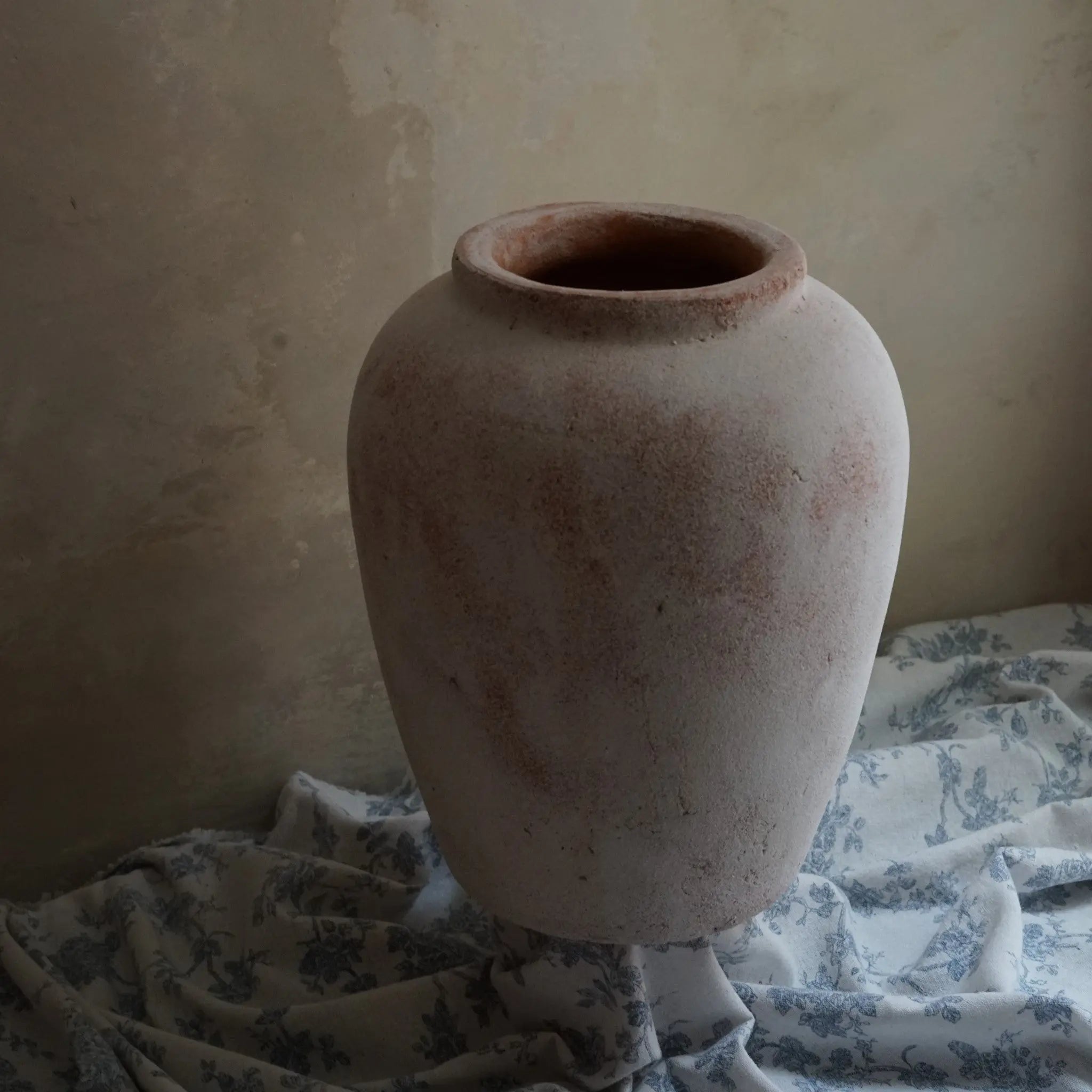
Plastic & Resin Planters
-
Lightweight, durable, and easy to move, ideal for renters or frequent rearrangers.
-
Available in countless shapes, colors, and finishes to mimic other materials like stone or ceramic.
-
Non-porous, so they retain moisture longer, reducing watering frequency.
-
Less breathable, which can lead to soggy roots if drainage isn't managed carefully.
-
Cheaper options can look low-end or flimsy.
Ceramic & Glazed Pots
-
Visually stunning with glossy or matte finishes in endless color options and artistic designs.
-
Retains moisture well, making it suitable for indoor tropical plants.
-
Adds substantial weight and stability, especially for taller plants.
-
Often lacks drainage holes, requiring careful watering or additional liners.
-
Heavy and delicate, moving them around can be cumbersome.
-
Can crack in freezing conditions if used outdoors.
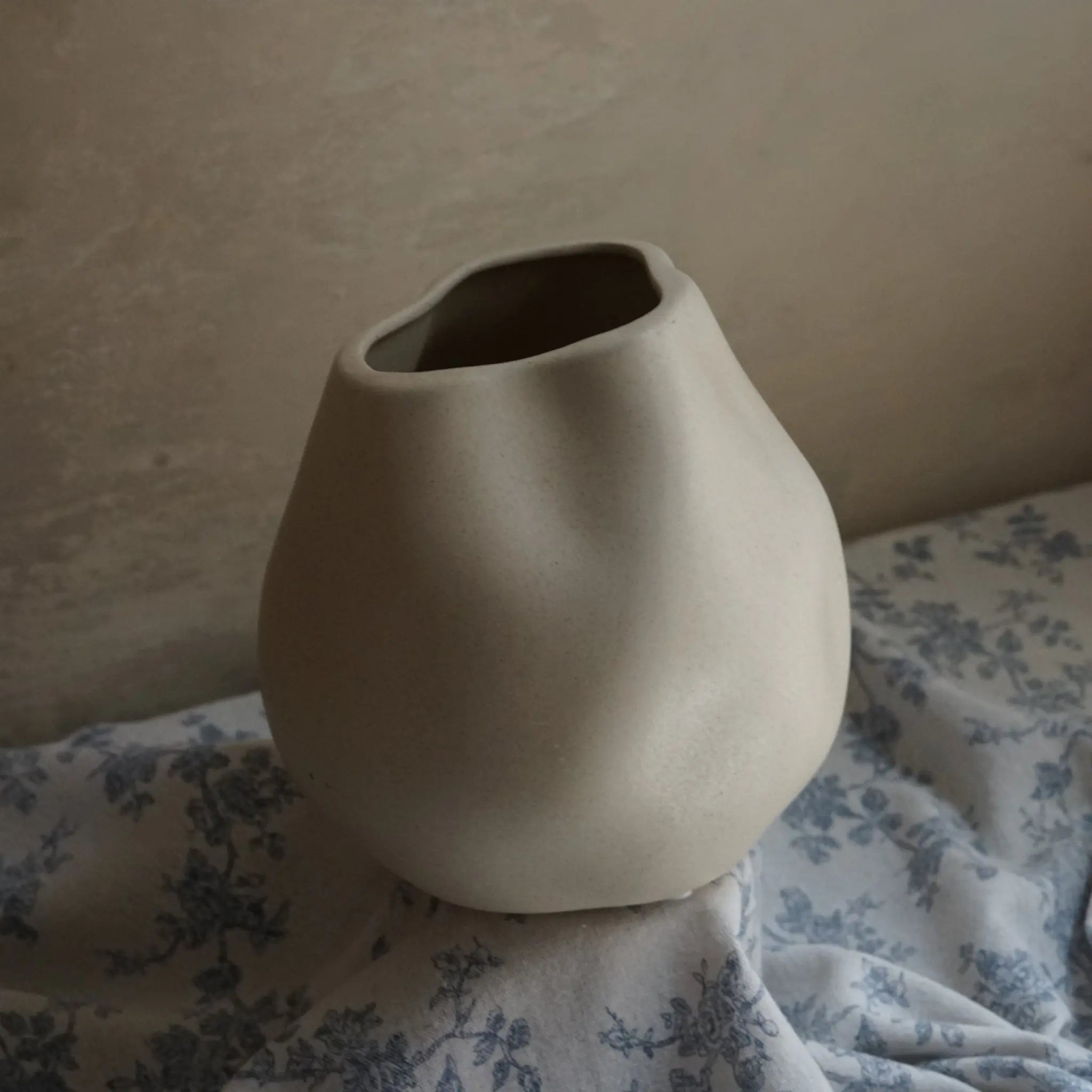
Metal Planters
-
Sleek, modern look that fits contemporary or industrial design schemes.
-
Resistant to cracking, breaking, or general wear and tear.
-
Often lightweight and easy to move despite their sturdy appearance.
-
May heat up quickly in direct sun, potentially damaging root systems.
-
Prone to rust or corrosion if not treated or lined properly.
-
Often needs a liner or insert for proper drainage and root protection.
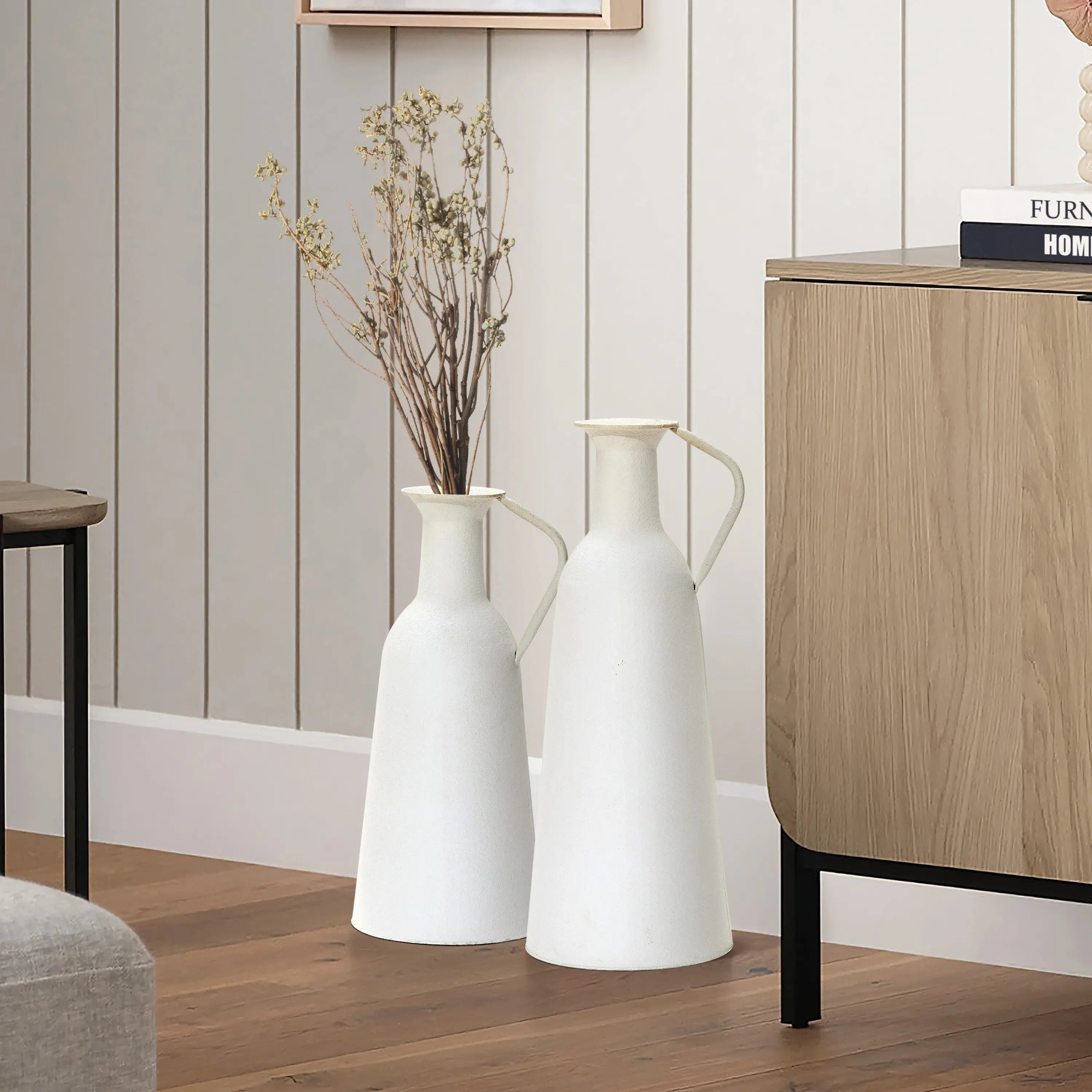
Top 2025 Picks: Transform Your Space with These Beautiful, Smart Planters
A Sculptural Standout: Beige Cachepot Planter
-
Looks like: A pair of creamy beige, bowl-shaped pots perched on slim black stands, striking a beautiful balance between soft and structured.
-
Why we love it: The minimalist form works equally well in modern lofts or warm transitional spaces. The contrast between the matte planter and the sleek metal legs adds just the right amount of drama.
-
Bonus: Elevation keeps your floors protected from moisture while giving your plants better light exposure.
-
Best for: Entryways, living rooms, or patios where you want a clean, elevated style that doesn’t steal the spotlight from your plant.
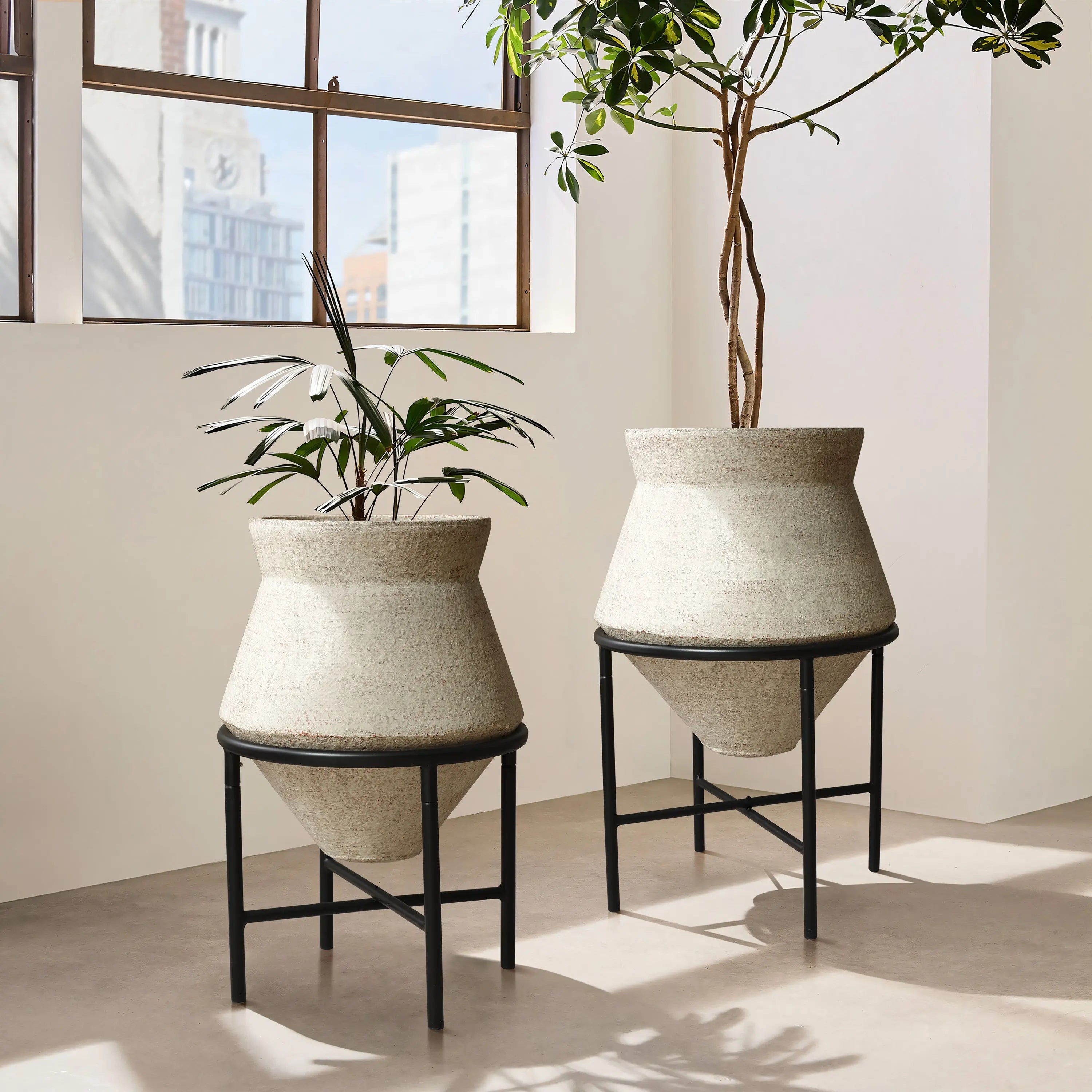
A Textured Gem: Jade Green Ribbed Ceramic Planter
-
Looks like: A medium-sized planter with a rich, jade-green glaze and evenly spaced ribbing around the body.
-
Why we love it: The tactile texture adds depth and shadows, making even a simple snake plant feel curated and intentional.
-
Bonus: Its 13.8-inch size is ideal for medium plants like rubber trees or bird of paradise.
-
Best for: Mid-century modern or boho-chic interiors that crave a touch of color without the clutter.
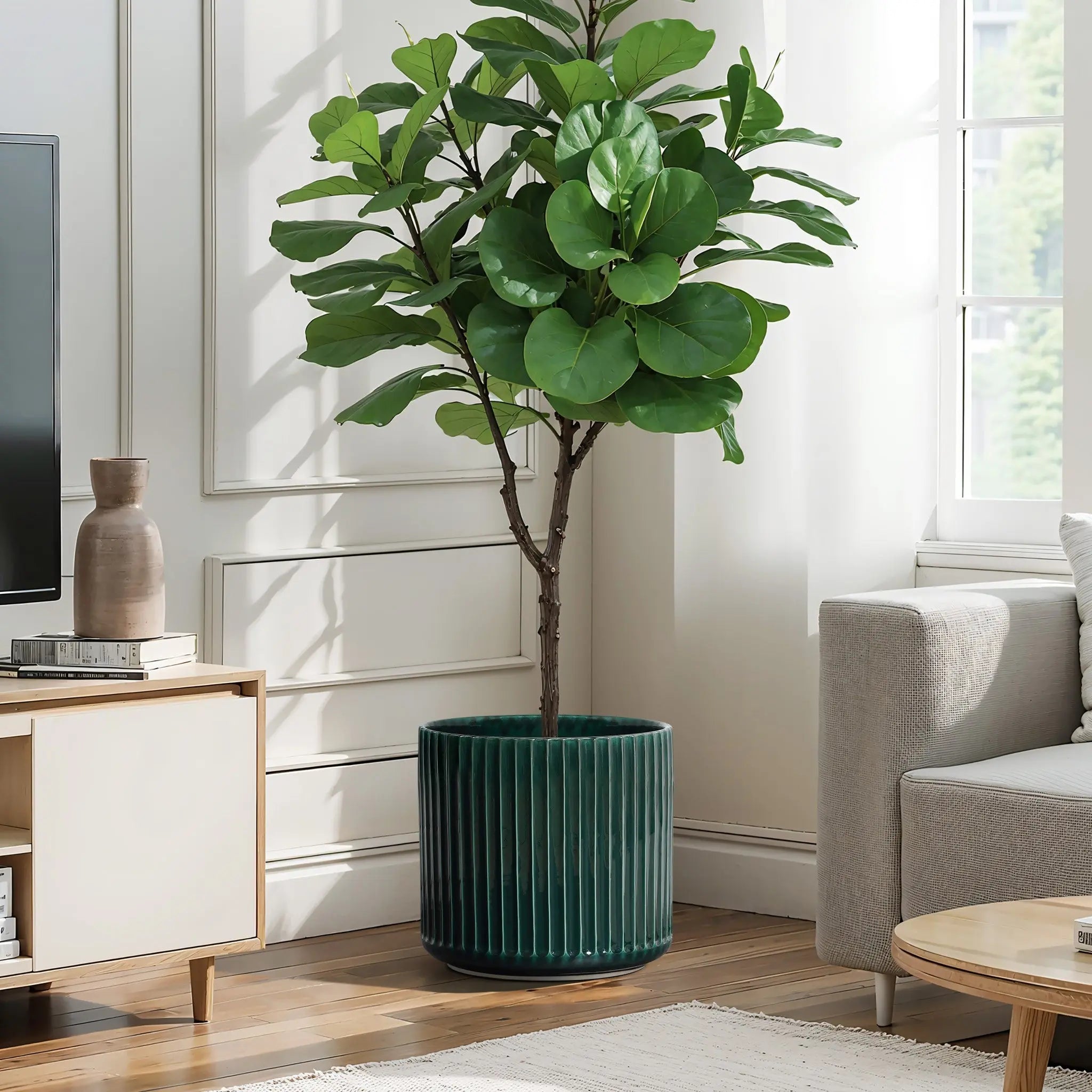
A Rustic Statement: Multi-Color Cement Round Planter
-
Looks like: A round, cement planter with warm hues of clay, sand, and charcoal blending in a natural marbled pattern.
-
Why we love it: It looks handmade and artisanal, the kind of pot you'd imagine finding in a Tuscan garden.
-
Bonus: Durable and weather-resistant, it easily transitions between indoor and outdoor environments.
-
Best for: Patios, balconies, farmhouse kitchens, or even a cozy reading nook.
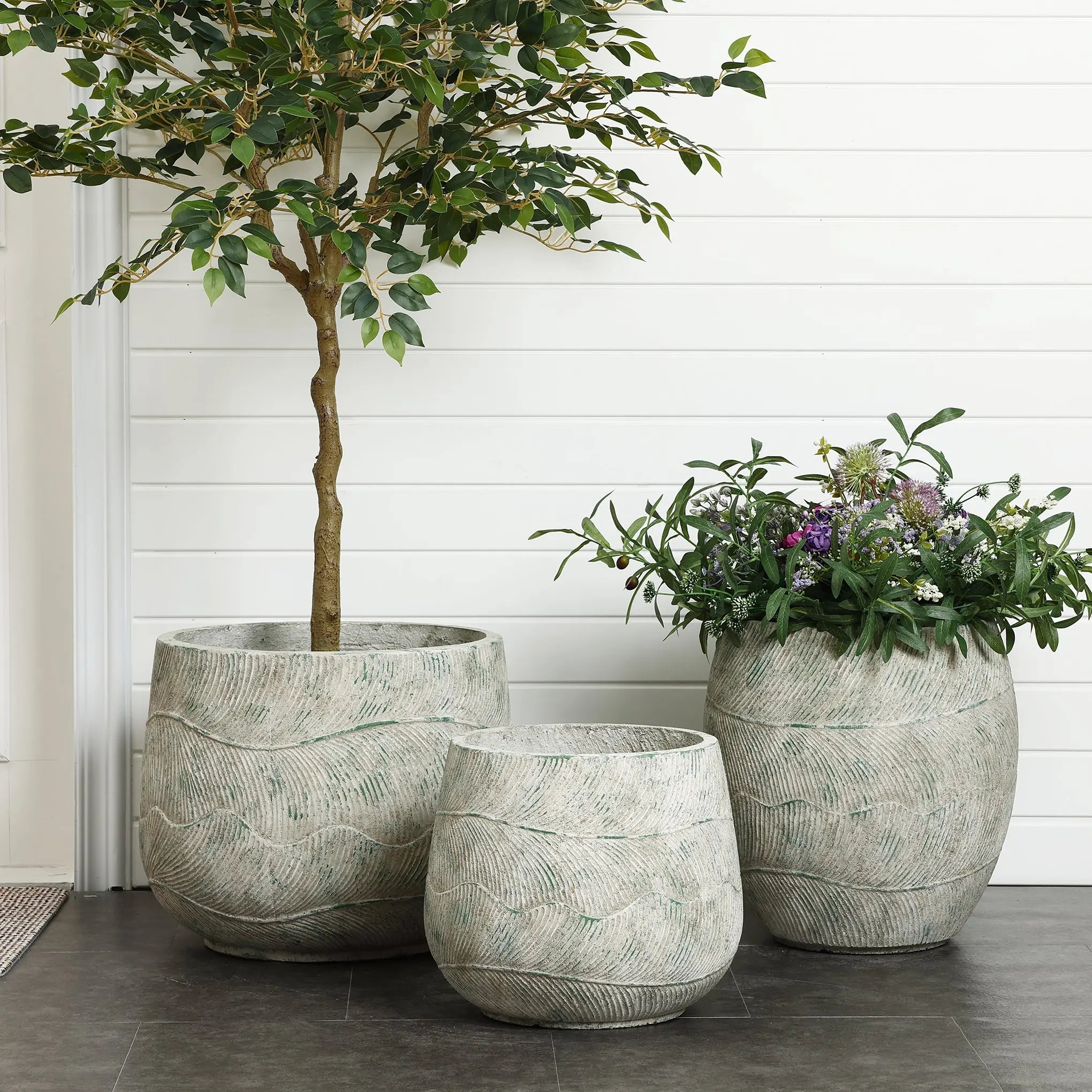
A Minimalist Marvel: Modern Gray MGO Planter
-
Looks like: A tall, cylindrical planter in a cool matte gray, with smooth lines and a minimalist silhouette.
-
Why we love it: The unassuming design allows dramatic plants, like monstera or palms, to truly shine. It blends seamlessly into Scandinavian or Japandi interiors.
-
Bonus: Made from Magnesium Oxide, it offers concrete-like durability at a fraction of the weight.
-
Best for: living rooms, modern offices, or minimalist entryways.
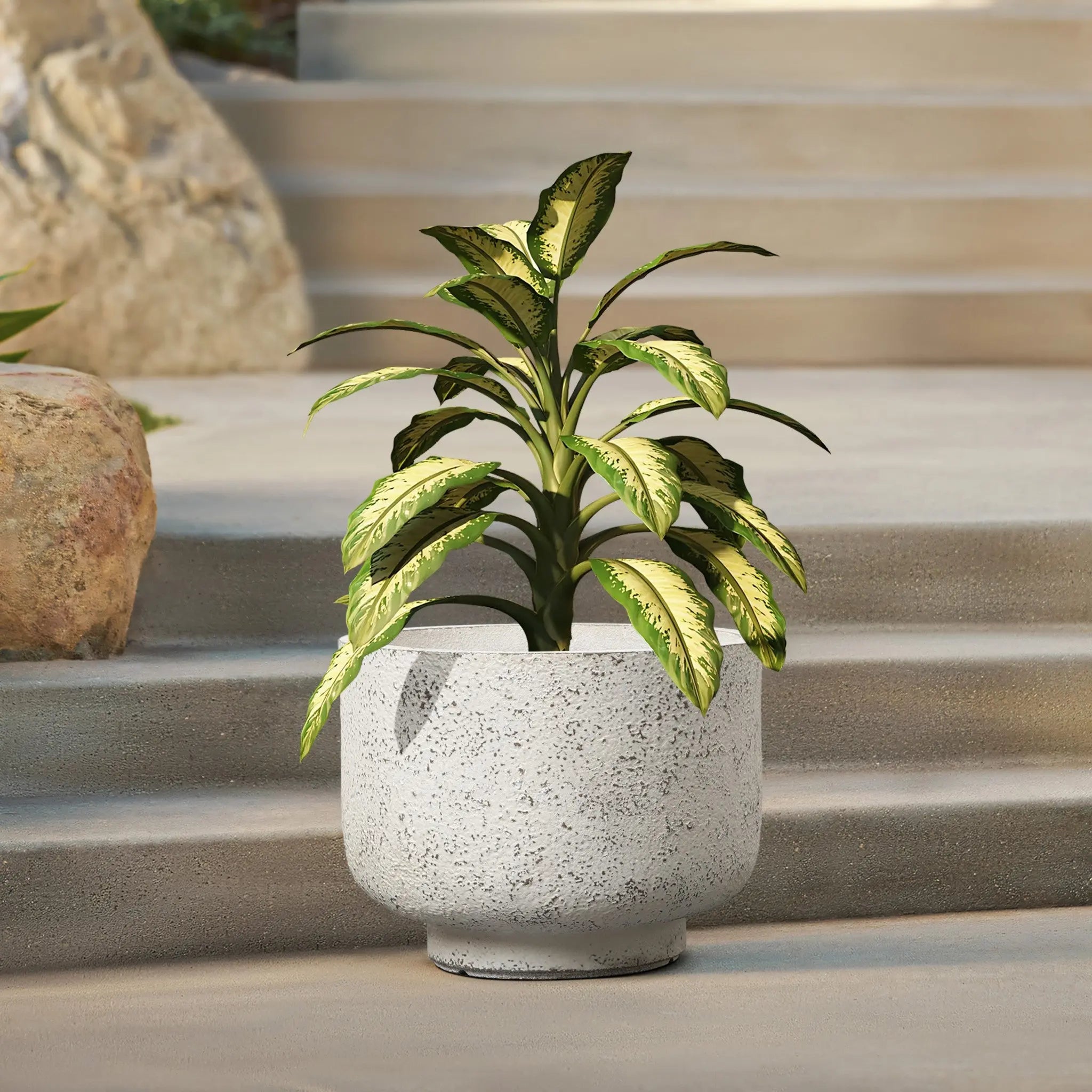
A Glamorous Duo: White Metal Cachepot Planter
-
Looks like: A matching set of white matte-finish pots lifted on gold-toned stands of different heights.
-
Why we love it: Elegant without being too showy, this duo creates balance and dimension whether placed side-by-side or styled separately.
-
Bonus: You get both a large and a small planter, perfect for staggered height visual impact.
-
Best for: Dining rooms, home offices, or anywhere that needs a chic accent.
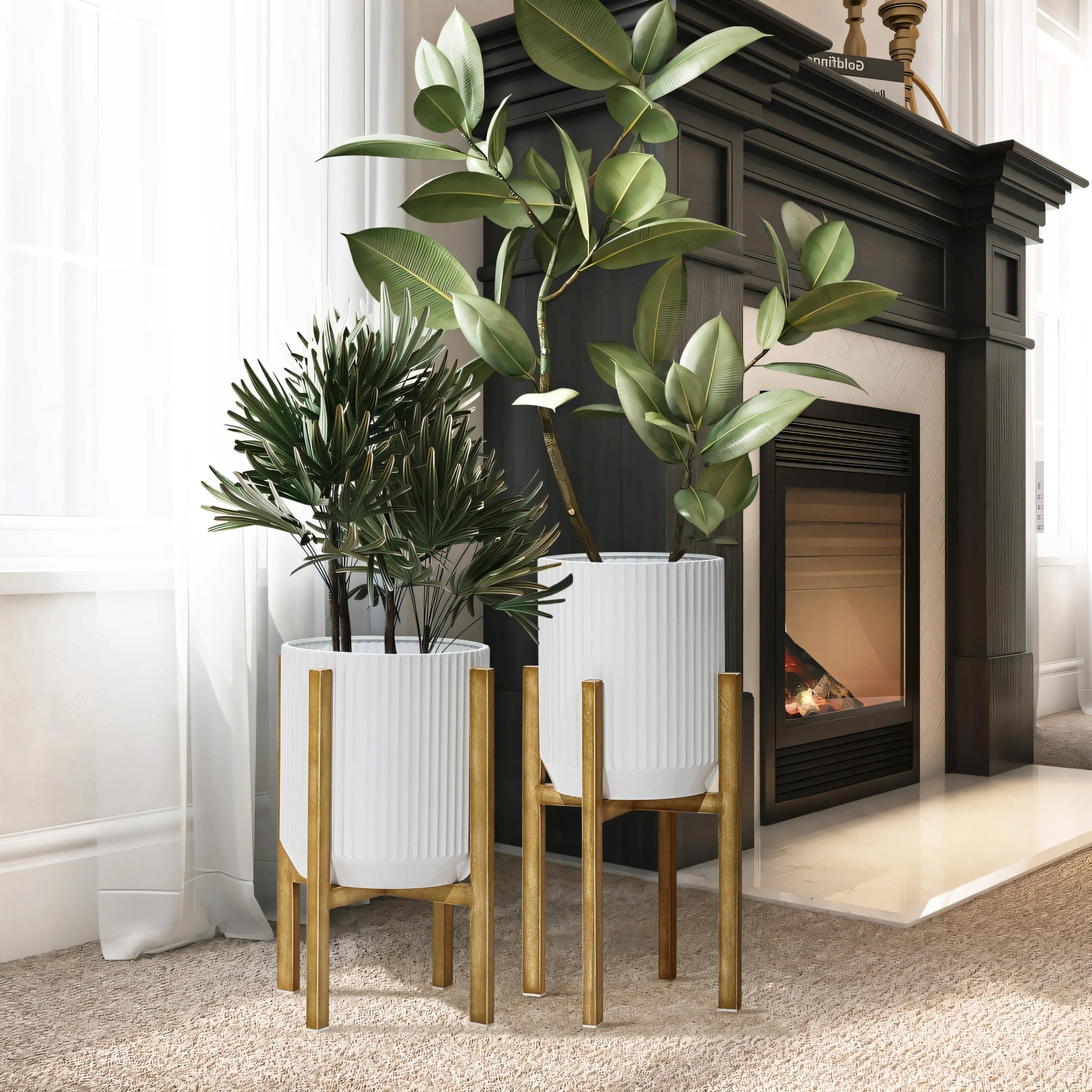
A Subtle Pattern Play: White and Beige Patterned Planter
-
Looks like: A gently rounded ceramic planter with delicate beige patterns etched into a white base.
-
Why we love it: It adds just enough visual interest to elevate your space, without overwhelming it.
-
Bonus: Its soft color palette makes it perfect for pairing with greenery or flowering houseplants.
-
Best for: Bedrooms, bathrooms, or serene corners where calm and beauty meet.
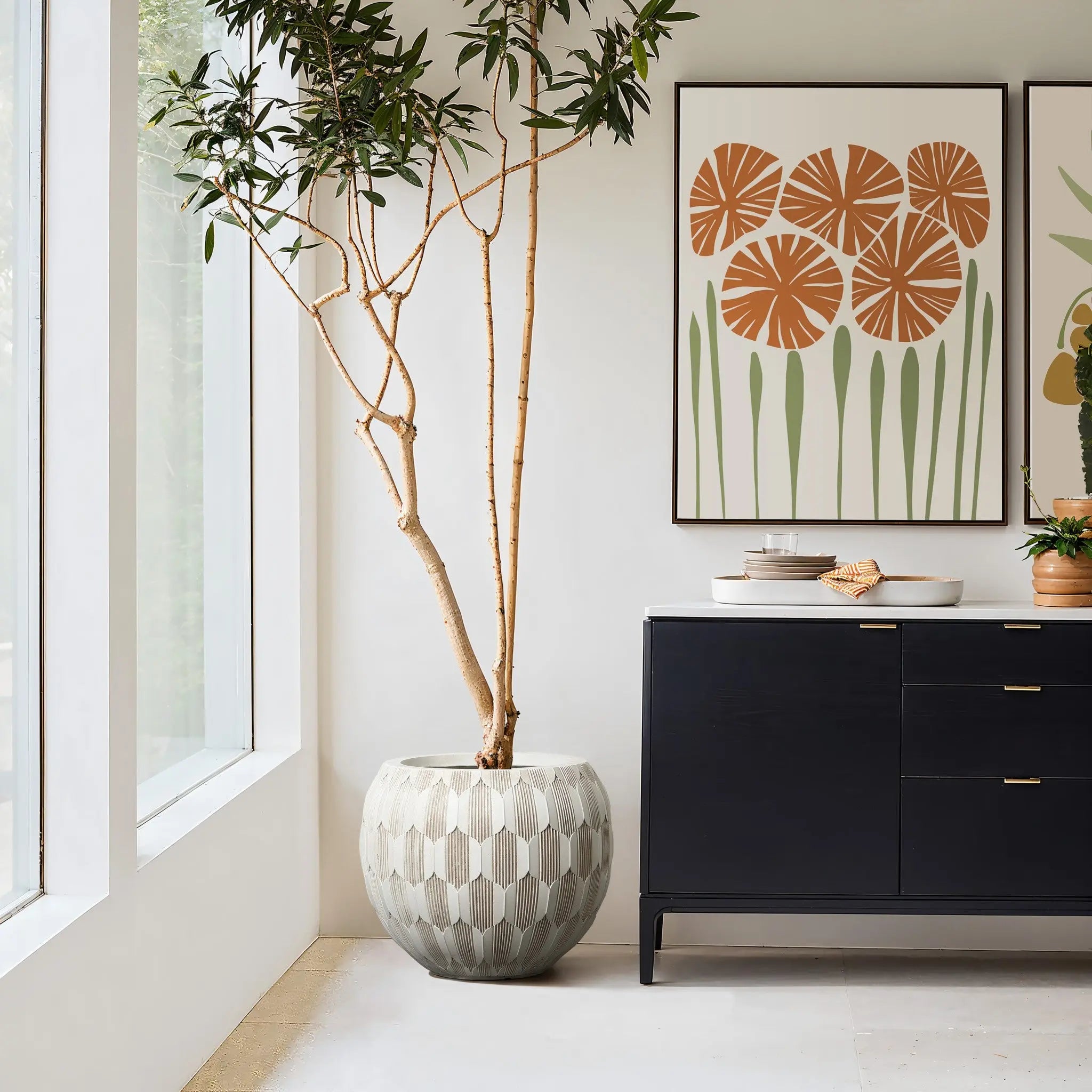
Buying Tips:How to Choose the Best Planters for Your Plant
Not sure which planter is right for your green friend? Confused about which pot to buy? These quick tips will steer you in the right direction:
-
Match Pot Size to Root Structure
-
Prioritize Drainage
-
Consider the Plant’s Water Needs
-
Think About Weight and Mobility
-
Choose a Pot That Complements the Plant’s Shape

Leave a comment